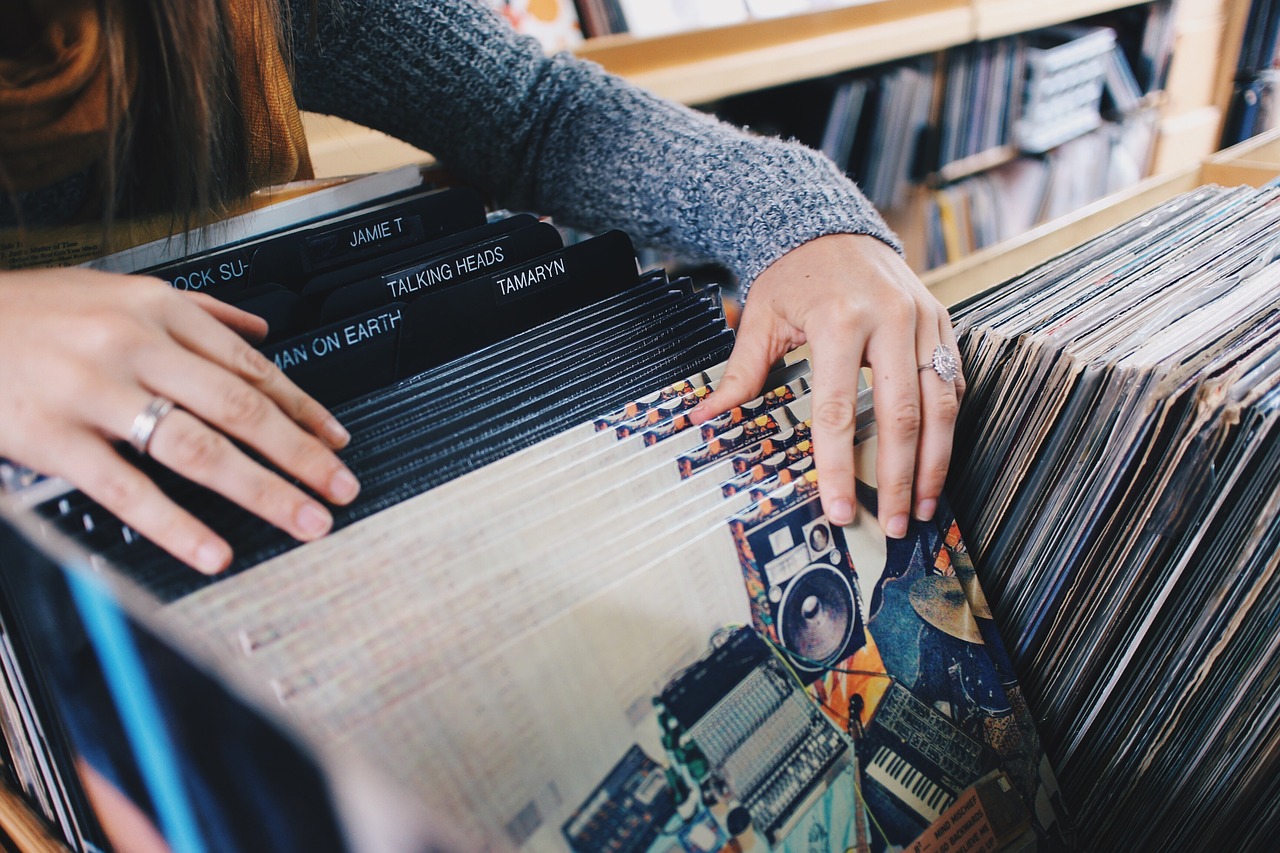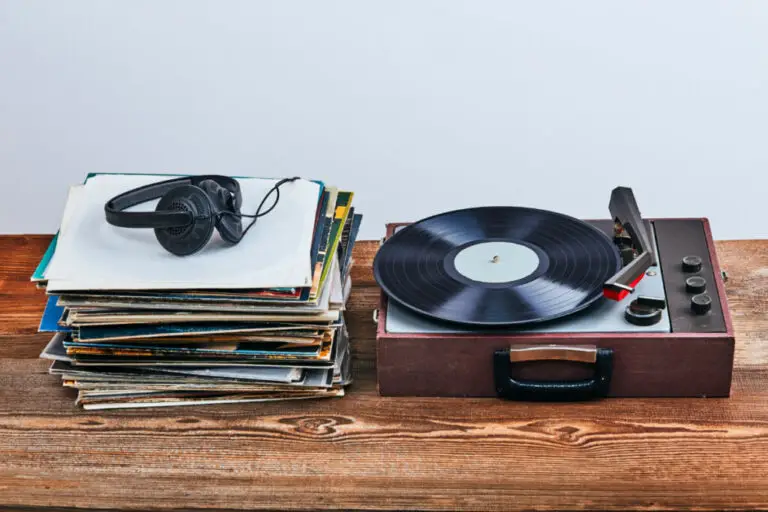How To Ship Vinyl Records (Without Damaging Them)
Vinyl records (or LPs) are coming back in style, with more people buying record players or dusting off old ones in the basement. So, if you want to sell or buy new records, now is an awesome time. But, you’ll need to know, how to ship vinyl records.
Thankfully, this article has you covered.
When shipping your vinyl, there are many things to consider: purchasing packing materials, packing your vinyl safely, and choosing a shipping method. Guarantee that your vinyl ends up safely at its destination through these tips.
Quick Tips To Safely Pack and Ship Used, Non-Factory Sealed Records
No matter your reasons for shipping vinyl records, you must take specific precautions when unpacking them from their jacket sleeve into boxes. Be careful because one scratch can take away from the record’s quality.
Vinyl is fragile and has a lot of surface area. You want to protect the entire record from scratches and breaks by packing it securely. Here are some simple steps to take to ship non-factory sealed vinyl records safely:
- Remove vinyl from the jacket sleeve. Scrutinize your vinyl. When you finish inspecting it for imperfections, return the vinyl to the inner sleeve for protection.
- Put your vinyl and jacket in a protective plastic sleeve. If you have a protective plastic sleeve, add another layer of protection. Place your protective plastic sleeve package inside a corrugated cardboard record mailer or large envelope.
- Add stiffeners or a bubble wrap enclosure. You may need to build your cushioning solutions with foam sheets, little pieces of cardboard, or extra bubble wrap to cushion any potential fall or shock the package might go through in shipping.
- Choose a shipping method. Top national shipping carriers are FedEx, the United States Postal Service (USPS), or UPS. If these are rare and valuable, consider getting them insured. Write fragile on the box, and make sure you track your package.
Special considerations are necessary if you are shipping multiple records. If you send factory-sealed records, which are probably valuable, do not break the seal when shipping. Get insurance and pack tightly and carefully.
Below, you’ll learn more about how to ship vinyl records.
Here’s a quick video that goes into some of the above steps:
The Six Steps You Must Take To Properly Pack Vinyl for Shipping
Consider this. You pack your vinyl records in a corrugated cardboard box but forget to put extra padding or some cardboard inserts between your vinyl. When they reach your destination, they are chipped, scratched, or broken.
Packing them safely and carefully can alleviate some of this stress during shipping. Below, you’ll see the steps you need to take before you ship your record.
1. Get your packing materials ready
Before you start to ship, you need to get your materials ready. This includes the following:
- Shipping containers or EZ fold mailers (that are firm enough to keep vinyl records secure).
- Bubble wrap or foam sheets that prevent the vinyl from bending and acting as extra padding.
- Cardboard stiffeners or record pads can help prevent bending.
- Extra sleeve covers to replace your current covers and protect vinyl packaging.
- Grab some packing tape (or masking tape) and a larger box (if shipping multiple items).
- Fragile stickers (for shipping).
Make sure that the packing materials you have are sized for your records. They come in 10 and 12-inch records and your goal is to ensure that your boxes are slightly larger than the records.
Gloves might also be handy to prevent you from getting fingerprints on the LP.
2. Carefully remove the vinyl from the jacket sleeve
Remove the vinyl from the jacket sleeve to completely control the jacket and the vinyl. If the vinyl is still in the jacket in shipping, it can get scratched or chipped easier than if the jacket and record are not separated.
While packing the vinyl, ensure you are not touching the lines or putting it on rough surfaces. Plan out a clean working space laid out for yourself while you are working on packing the vinyl.
While the vinyl is out, now is a great time to remove dust. When cleaning, use a microfiber cloth with water. Avoid hard chemical cleaners.
3. Inspect your vinyl for imperfections
If you sell your vinyl, inspect it before sending it off in a shipping envelope. Note any imperfections before shipping so you can let the buyer know or refute any claim that there is a scratch before purchasing.
Here are some essential steps to take during the inspection:
- Place your vinyl under a bright lamp. You will be able to see any imperfections clearly under a light.
- Turn it around. The more you inspect it, the more detailed your notes can be. Make sure to look around all of the edges. Turn it upside down and look at the back of the record.
- Write down any imperfections or take pictures with your camera to have a visual record of any defects.
Scuitinizing your records protects you from the buyer, enabling you to hold the shipping company accountable. Whether hiring USPS or a moving company, having a record is crucial.
4. Return the vinyl to the inner sleeve for protection
If your record has an inner sleeve, place your vinyl inside for extra protection. This inner sleeve is generally made of lightweight paper, which will not scratch the record if it is in motion.
The sleeve is a natural buffer between your record and the outside world. Look at it to check if it’s in good condition. If necessary, replace the sleeve to ensure your record is protected.
Next, place the record on top of the jacket. If you have some tissue paper to separate the sides of the jacket from the vinyl, place them in between your record and jacket as an extra layer of protection.
5. Place the vinyl in an extra plastic sleeve
Place your record and jacket inside an extra protective plastic sleeve. If you do not have a protective plastic sleeve, wrapping bubble wrap around everything will do. Whichever you use, secure all of the openings with tape.
A protective plastic sleeve creates another barrier between the record and the sturdy envelope or corrugated cardboard packaging you will use. Putting as much protection as possible between the vinyl and other objects will help.
The extra sleeve will prevent the record from bouncing around.
6. Place in a corrugated cardboard record mailer or sturdy large envelope
Some mailers have more features than others, depending on their price range. For this reason, some have inner cardboard stiffeners and are easy to assemble, while others have custom flaps and creases. Here are some of the most popular:
- Mighty Music Mailers– these square mailers have corner padding and self-adhesive strips. They are corrugated cardboard and have extra cardboard layers around the vinyl record’s edges.
- CLP Bubble Bukwrap– Excellent corner protection; you can ship multiple records in one mailer.
- Whiplash (Standard) mailer– These mailers have rolled-out corners and cardboard stiffeners attached to the box and bubble wrap. They are expensive; you will need extra stiffeners and bubble wrap/foam additions to ship them.
- Record mailers from the UPS store– They are cardboard mailers that meet all your needs. The UPS Store also sells extra bubble wrap, cardboard stiffeners, and foam inserts.
Sturdy envelopes can have multiple layers of cardboard or just one thin layer. If your record can easily bend inside the package, add some stiffeners or cushioning.
5 Tips For Keeping Your Vinyl Secure While In Transit
1. Cardboard stiffeners stop your vinyl from bending
If you choose a mailer that does not have much cardboard padding or premade stiffening, you can make your own or add some to make your mailer extra secure. Add bubble wrap or foam pieces to both sides of the plastic sleeve and apply tape.
A foam board or a cardboard stiffener is just flat foam or cardboard. Both can add some padding and prevent the bending of the record.
Your goal is to create as little wiggle room as possible. Any movement inside the box can cause damage. You will want to make it as secure as possible. Check and make sure the package closes before shipping.
This video can give you tips on homemade record mailers:
2. Use the sandwich method to secure your package
There is a packing method called sandwiching that is simple and effective. The sandwiching process is the easiest way to pack your records tightly and securely in your chosen packaging. Here are the steps:
- Take two solid cardboard pieces and flatten them out. When your record is still outside the packaging, grab two flat corrugated cardboard pieces. Make sure these pieces are not wider than your records. They need to fit into your packaging.
- Sandwich your record between the two pieces of cardboard. Put one side of your record against one piece of cardboard. Now put the other side of your record against another piece of cardboard.
- Slide the “sandwich” into your package. Carefully slide this sandwich into your packaging and add any extra padding necessary. Do not add too much, or it will cause your record to warp.
- Secure the package. Tape the folds, check the corners of the packaging, and tape any of the loose sides of the packaging
The sandwiching method is the best way to keep your record packaging sturdy and flat. If you have any space between your record and packing, you might cause the LP to move around and possibly get damaged.
Check out this video so you can see how the steps work visually:
3. Protect the Corners
The corners of any package can get destroyed if bumped around in transit. Protecting the corners of your parcel’s inside and outside will help prevent this.
You can tape the corners to help the box stay tightly packed outside your packages. Taping the corners will also help keep them from getting smashed in transit.
Inside the package, before you pack the whole record, you can put bumpers on the edges of the box. Make sure these bumpers cover the entire, a little peace of mind edge from corner to corner. That way, the corners are covered.
4. If your records are valuable, get them insured
Consider getting insured if you send a valuable or rare LP. Doing this will protect you from damage and give you some theft protection. There are several ways you can ensure your packages.
- United States Postal Service– You can insure your package is up to $5,000.
- Use a company like Easyship– Varies from company to company but typically matches the $5,000 limit of USPS.
- UPS also provides shipping insurance– At no extra cost, UPS insures your package for up to $100. You can declare up to $50,000 per package, but you have to enter this declared value on UPS.com. You will be charged a fee for this.
- FedEx package insurance– FedEx’s maximum declared package value is $2,000, and additional fees are added.
If you think you need some shipping insurance, you probably should. Think about the value of the objects you are shipping and selling or moving them yourself.
5. Use the “fragile” shipping label
On the outside of the package, write “Fragile: Vinyl Record.” That way, the mail carrier knows to treat it with care. This does not guarantee that your record will get there safely, but this will help.
Attach your shipping label to your package near the “Fragile” tag so that the mail carriers see both the label and the “fragile” writing. Doing this might help the mail carrier be more inclined to treat the package with a bit of extra care.
What’s The Best Shipping Method For Shipping Records?
You can choose from several shipping methods depending on what you are comfortable with or have used. The most common shipping methods are through the United States Postal Service, FedEx, and UPS. Usually, FedEx is the most reliable, and expensive, option.
USPS is the general US Postal Service, while FedEx and UPS handle packages and other materials traveling daily. Here is more information about each, with the benefits of using each method.
- USPS- the United States Postal Service locations are located in neighborhoods across all US cities. This option is the most cost-effective but could be a little more damaging. Make sure you pack and label your package nicely for the mail carriers.
- FedEx- FedEx provides overnight shipping, package insurance, pickup and drop off, and printing online shipping labels. Most Walgreens also accept FedEx shipments if a FedEx store is not near you.
- UPS- UPS is another excellent option if you are shipping fragile items. UPS stores are located in major cities and towns. You can ship overnight to drop-off locations and purchase package insurance. UPS tends to take good care of their packages in transit. You can also ship directly to a UPS store’s address to hold for someone.
Which shipping method has the best tracking?
Several options exist to track your shipment if you go through USPS, FedEx, or UPS.
- USPS- When you go through USPS, you can verify your package by filling out a tracking shipment form at the front of the post office. When you pay for your package, they will immediately give you a tracking number set up in the system. Economy shipping won’t always offer tracking.
- FedEx- For FedEx, you can sign up for FedEx Delivery Manager quickly and for free. You are already paying a little extra through FedEx, so track your package.
- UPS- For UPS, you can use an order number to track your shipments, sign up for My Choice so you can track your shipments online, or sign your business up for UPS My Choice for Business. With My Choice, you can get multiple delivery updates and reroute your packages if they go to the wrong place.
Whichever service you choose, make sure you get a tracking number either on your receipt or through your email.
What Should I Look For When Purchasing Vinyl Mailers?
Consider how much padding it has if you have a type of mailer in mind but do not know if it will fully protect your vinyl. Also, consider what extra supplies you might need to pack your vinyl.
Here are some special considerations and questions to ask when you are looking for these mailers:
- Does the mailer have built-in cardboard bumpers? These bumpers can be the protection that your vinyl needs to protect it from a mishandled package or another shipment bumping the sides.
- Can I fit more than one record inside of the mailer? If you separate each vinyl with some bubble wrap, cardboard pieces, or padding, and if your mailer is large enough, you can pack more than one into a mailer.
- How much corner or edge protection will my box have? The most damage that the package will get is corner damage. If you do not purchase a corner protection package, make sure you make your bumpers inside the box.
- How many layers of cardboard does the mailer have? Look and feel the package. If it is thick, there is probably more than one cardboard layer. You can always put more cardboard pieces of your own to protect your vinyl.
Mailers come with different layers of protection. How much you want to spend on custom vinyl pockets is up to you. You might want to add the extra padding to the mailer yourself. Either way, make sure your mailer is well-protected.
Vinyl Record Shipping FAQs
How Do You Ship Multiple Vinyl Records?
If shipping multiple vinyl records, consider sending them all in one box, separating them with the sandwich method. If you have over 30 vinyl records, separate them into multiple boxes.
You’ll need to factor weight versus padding in this case. If the padding looks squished down when you pack it, you probably have too much weight.
How Do I Ship a Factory-Sealed Vinyl Record
If you have a factory-sealed vinyl record, you can skip the step about removing the record from the sleeve. If it is still factory sealed, it is probably more valuable. Just make sure you have extra padding so that the packaging isn’t damaged.
How Much Does Shipping Vinyl Records Cost?
The cost of shipping vinyl records starts at $2.63 through USPS Media Mail. However, you’ll find that prices can be much higher depending on what you need (like packing material, faster shipment, or insurance):
If you use specialized shipping companies like FedEx or UPS, your costs will increase. You’ll also need to pay for packing materials, the weight of the package, and whether the box requires special handling instructions (fragile).
Costs can go up to tens of dollars if you exceed twenty records. If you don’t know how to ship vinyl records regarding packing, you can also pay for packing services.
How Do You Dispose of Packaging Materials?
When disposing of shipping materials, check to see if they are recyclable. Beyond that, throw the remaining materials away responsibly.
Conclusion
If you are shipping one or multiple vinyl records, consider packing your packages carefully and with much protection. When the records reach their destination, you want them to be in the same condition as when they left.









